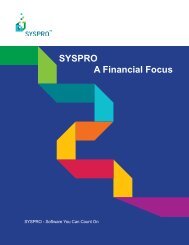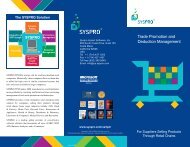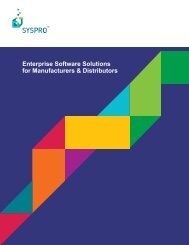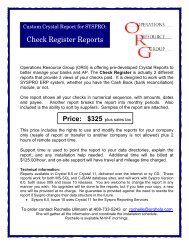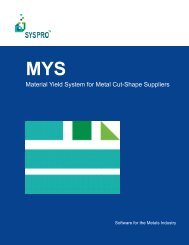Teach Yourself e.net - Syspro
Teach Yourself e.net - Syspro
Teach Yourself e.net - Syspro
You also want an ePaper? Increase the reach of your titles
YUMPU automatically turns print PDFs into web optimized ePapers that Google loves.
5.3. Setup Class<br />
There are three Methods within the Setup class: Add, Update, and Delete.<br />
Use the e.<strong>net</strong> Diagnostics suite's Harness tool and see the method options displayed when<br />
you select the Setup class:<br />
By selecting each different method and clicking on the business object drop down menu<br />
you can see which business objects are available for that particular method within the<br />
Setup class.<br />
5.3.1. Setup.Add<br />
Syntax:<br />
Setup.Add(UserID, BusinessObject, XmlParameters, XmlIn)<br />
The Add method enables one or more data items to be added to the SYSPRO data<br />
structures.<br />
The Setup.Add method requires two XML input strings. The first, XmlParameters, is<br />
used to pass parameters to the specified Business Object. The second, XmlIn, contains the<br />
data to be added to SYSPRO. The Business Object will return an XML string indicating<br />
success or failure. The Add method can be used as the basis for an import function.<br />
The structure and parameters allowed in XmlParameters and XmlIn is dependent on<br />
the business object being called.<br />
Business objects available to this method can be found in the Business Object Reference<br />
Library list available on the SYSPRO SupportZone e.<strong>net</strong> solutions menu.<br />
Use the e.<strong>net</strong> Diagnostics suite's Harness tool and select Setup.Add. Load the APSSSP<br />
business object:<br />
Now click on the Load XML button to view the sample XmlIn.<br />
5–26





